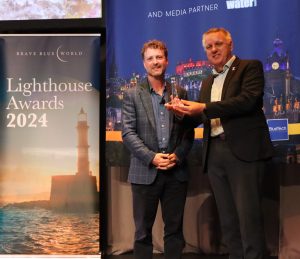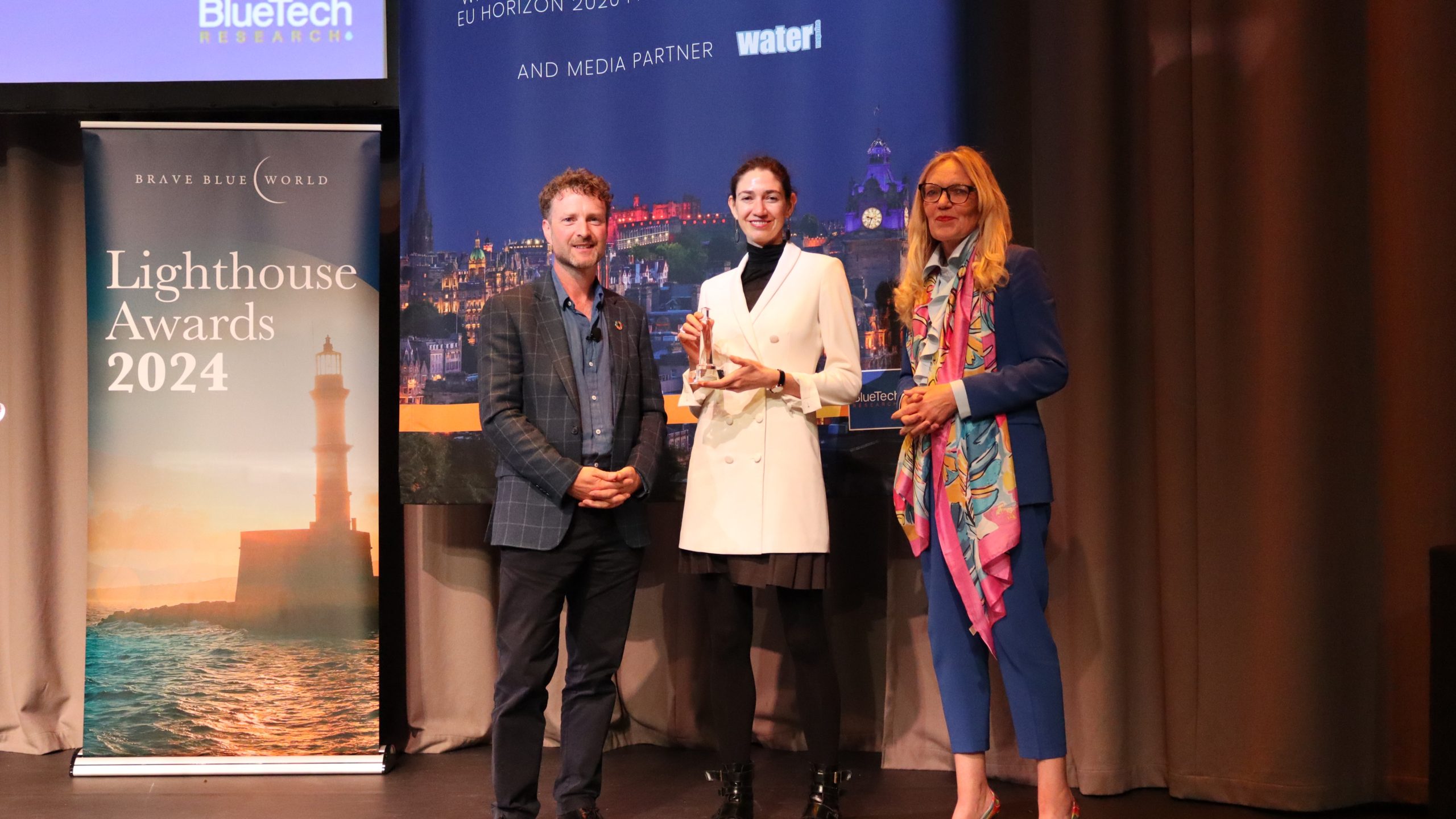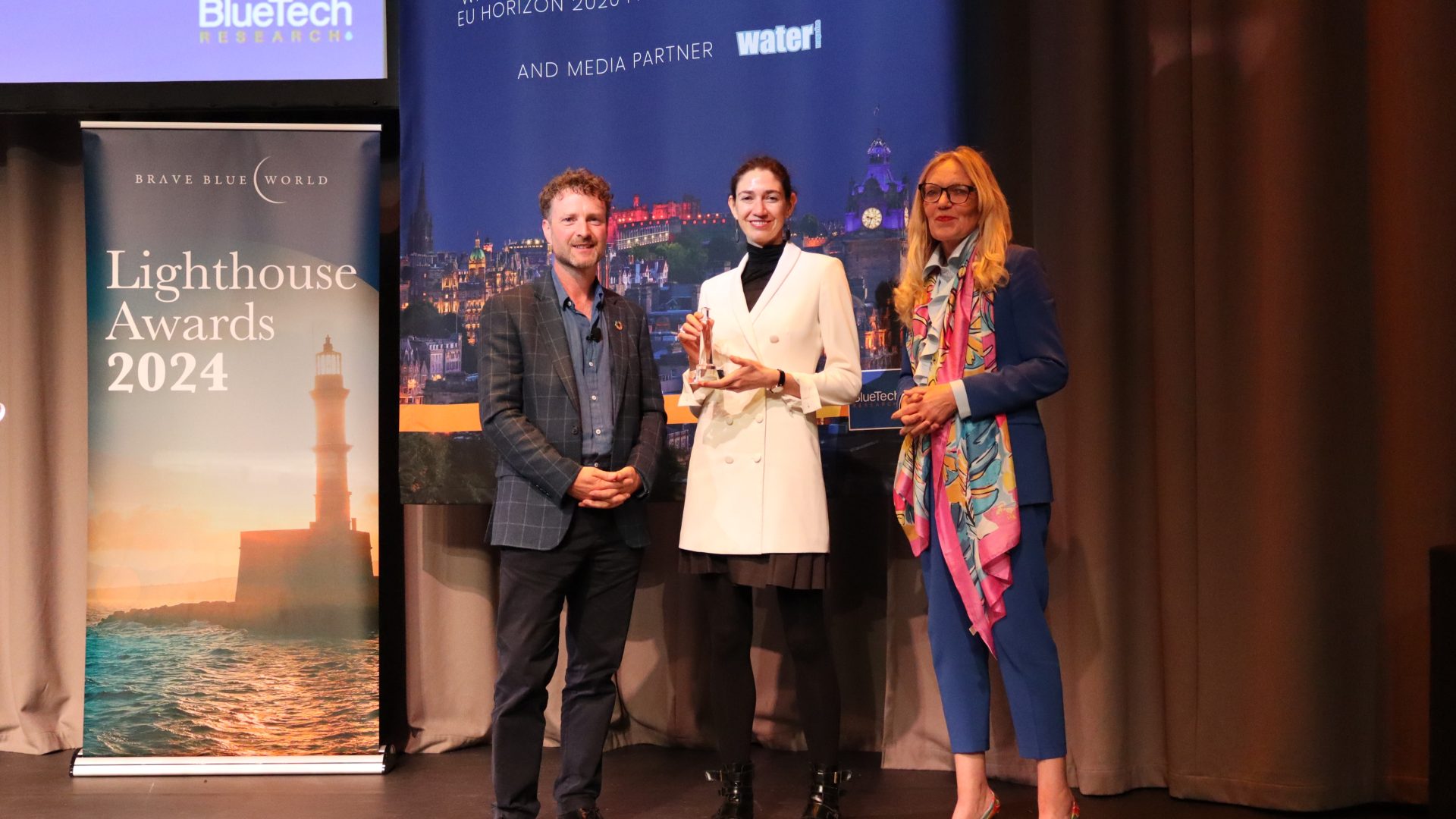Technology companies Microsoft and Apple have been recognised alongside Martens Brewery and utilities Thames Water and Severn Trent Water as recipients of the Lighthouse Awards 2024, presented to organisations leveraging innovation to protect and enhance water supplies globally.
Launched in 2020 by the Brave Blue World Foundation, a non-profit dedicated to scientific and educational storytelling, the Lighthouse Awards identify pioneers who have shone a path to water resilience and security for others to follow. They have developed new ways of using technology in collaboration to reduce their impact in water stressed regions or build resilience in local water systems.

Founder of the Brave Blue World Foundation, Paul O’Callaghan said:
“The water challenges we face at the global scale are immense, but great minds and innovations are being brought to bear. For the Lighthouse Awards, we seek out inspirational collaborations, sometimes between very new and agile technology start-ups, working closely with global corporations and utilities, that show the way.
“These are the pioneers we will all come to follow, and the award-winning projects are examples of how we can act to ensure there is enough freshwater for future generations and their scalability is a major consideration of the judges. We hope to inspire others in the corporate world and beyond to take bold steps towards creating a sustainable water future and raise greater awareness of the fascinating work happening in the global water community.”
Selection of the winners is carried out by adjudicators from technology market intelligence company BlueTech Research, and is based on a range of criteria. This year’s themes were water loss, alternative supplies, water reuse and resource recovery.
The four collaborations receiving the Lighthouse Awards 2024 are:
AI deployed to reduce leakage in London – Microsoft, Thames Water and FIDO Tech
This collaboration is aimed at addressing water losses from leakage in London and the broader Thames Water region. FIDO Tech, known for its AI-driven solutions for leak detection, is leveraging Microsoft’s technological infrastructure to enhance its capabilities.
This partnership aims to support Microsoft’s commitment to becoming water positive by 2030 by reducing non-revenue water through AI-powered leak detection, which is anticipated to save millions of cubic metres of water annually. Thames Water aims to reduce leakage by 20% by 2025 and halve it by 2050, performing over 1,300 repairs weekly.

Rainwater supply for schools in Vietnam – Apple and Gravity Water
This partnership is bringing safe, clean water to 131 schools in northern Vietnam, and is connected with Apple’s water strategy to address water availability, water quality and water accessibility in its supply chain around the world. With its rainwater harvesting and filtration technology, Gravity Water is providing over 38,000 students in Hòa Bình province with a clean water source.
The partnership has combined the Gravity Water Box for standardised treatment with integrated low-tech sensors and cloud-based internet-of-things (IoT) for efficiency. A climate education toolkit to teach students about water conservation has also been developed. The partners say these steps represent a significant leap forward in providing safe water access and fostering water stewardship among the next generation.
Driving water efficiency in brewing – Martens Brewery and Waterleau
This Belgian partnership has seen Martens Brewer become the most water efficient brewer in Europe. Waterleau has redesigned the wastewater treatment plant at its largest site in Kaulille, under a design-build-finance-operate model, with a 10-year financing agreement.
The redesigned plant includes advanced treatment technologies such as high-rate anaerobic towers, aerobic treatment, high-recovery reverse osmosis (RO), and a heating-cooling circuit with a heat pump. The high-recovery RO membranes enable 90% of the effluent to be reused as process water, requiring only 1.2 litres of water per liter of beer produced.
The anaerobic towers facilitate energy efficiency by treating high organic loads and generating 1750 Nm3/day of biogas, which powers a combined heat & power unit. The partnership introduces the WaterLease model, offering a capex-free upgrade and focusing financial resources on brewing capacity expansion.
Waterleau will operate the plant, incorporating the SmartLab digital suite for remote monitoring and optimisation.
Recovering cellulose from sewage for reuse – CirTec, Severn Trent Water, AtkinsRealis and JN Bentley
This ground-breaking collaboration involves construction of the world’s first large-scale cellulose recovery plant at UK utility Severn Trent’s Net Zero Hub sewage treatment works in Strongford, Staffordshire. Cellulose recovery specialist Cirtec, based in the Netherlands, removes toilet paper residue from sewage and recycles it into a valuable, sustainable material that can be used for other purposes such as insulation or construction products.
At Strongford, digestible organic residual streams and cellulose are extracted from influent and retreated onsite to produce biogas and new materials. The cellulose is dried and sanitised ready for conversion into marketable products with potential use in construction and insulation.
The project signifies a major advancement in resource recovery and sustainability in wastewater treatment, to reduce waste, conserve resources, and protect the environment.



